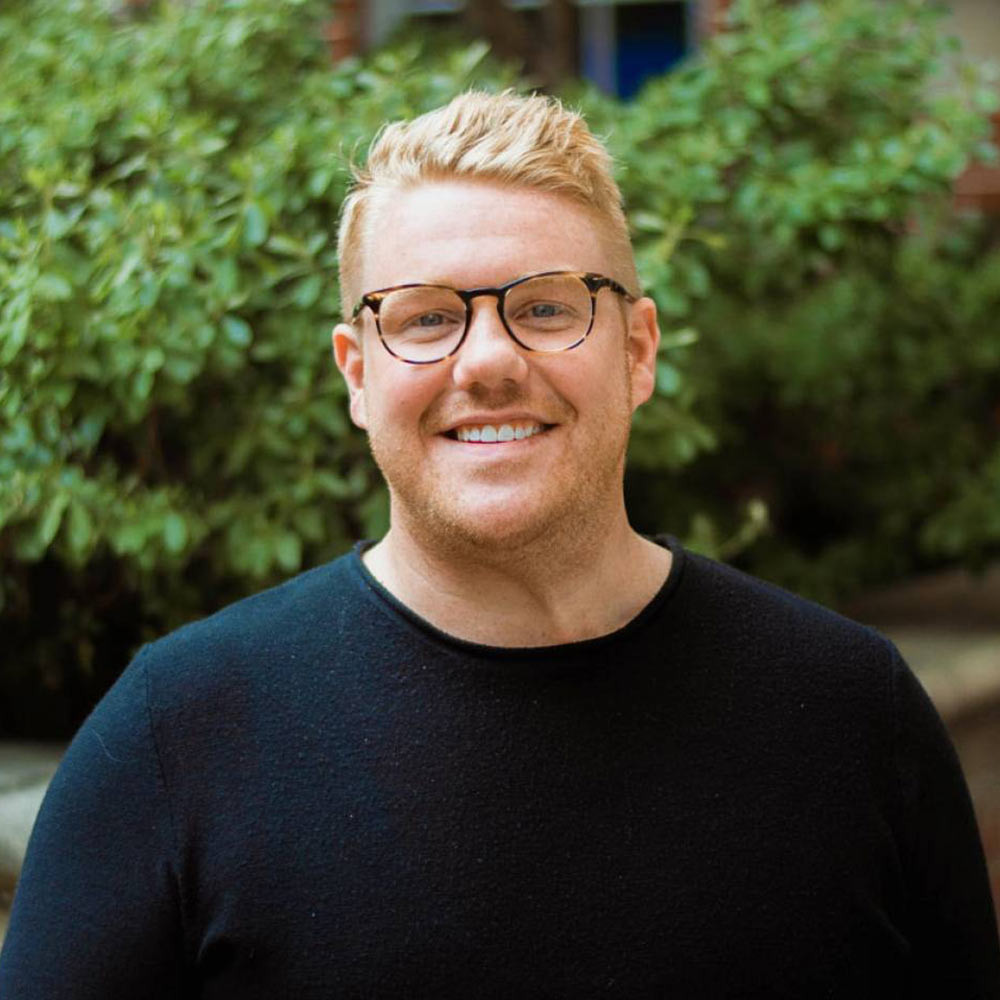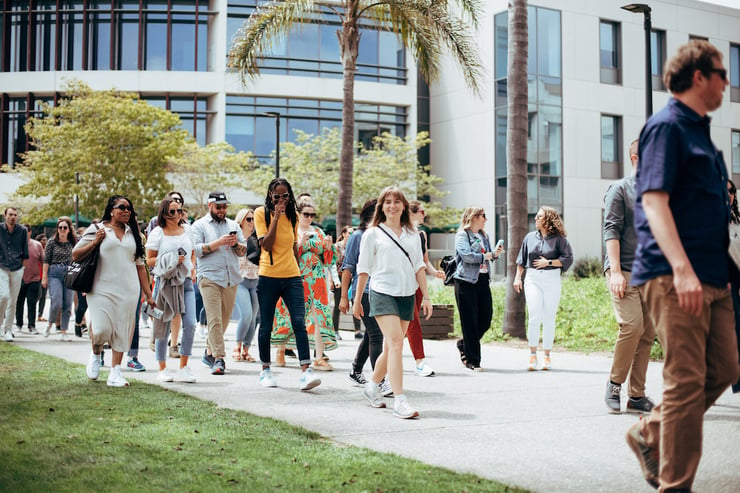Cole Londeree is SimpsonScarborough's recently promoted Creative Director, overseeing an ever-growing creative team of six including graphic designers, copywriters, and videographers. She reports to the venerable Mike Roe, our VP of Creative.
We sat down with her to learn about what it takes to lead a high-performing creative team, what she wishes more people understood about design, and some of her favorite projects to have worked on.
MK: I actually want to start by hearing about your own personal higher ed experience. Where'd you go? What'd you study?
CL: When I went off to college, I had this vague idea of what I wanted to do, but it wasn't really solidified yet—which I think is pretty common. I actually started at a liberal arts college outside Chicago, which allowed me the opportunity to explore some things and find what I did and didn't like. By my sophomore year, I knew I wanted to study graphic design, and that's when I made the move to art school to attend MICA (Maryland Institute College of Art) in Baltimore. I ultimately finished at Columbus College of Art & Design after some family circumstances drew me back to the Midwest. So I actually went to three schools for my undergrad, which I think is becoming more and more common.
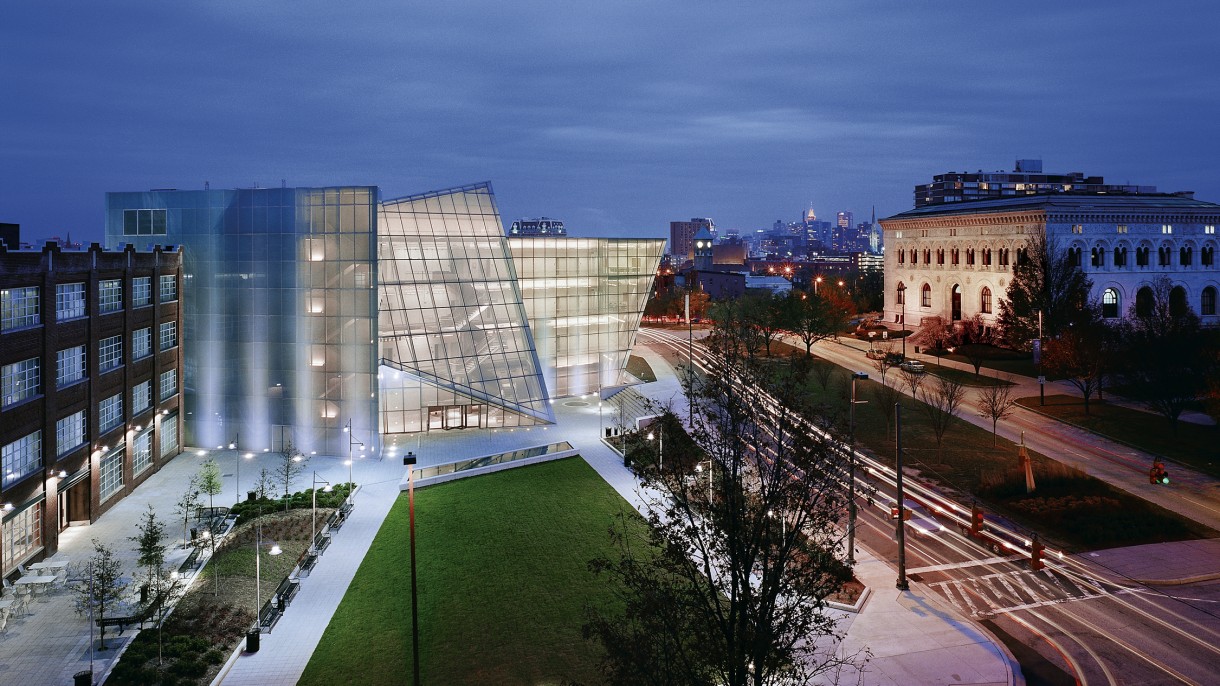
MK: What was it that drew you to graphic design?
I knew I had an interest in design, but the idea of a designer was sort of vague to my family. My dad really thought that to be an artist, who's still able to make money, you have to be an industrial designer—like design cars, or tech products, etc. I was never really interested in that, so I was hesitant at first to consider design because it was really important to me to have a marketable skill. That's ultimately why I started at a liberal arts school—I wanted to keep my options open. When I realized that graphic design could provide me that stability, I felt more comfortable pursuing it.
It was definitely a tough transition for my parents to be comfortable with me going into the creative field, though. My dad's an engineer, and my mom's a doctor, and they were worried that I wasn't going to be able to support myself.
MK: Is it fair to say that graphic design was that middle ground between industrial design and being able to make a living doing creative work?
CL: Yeah, I think that's fair. I think part of my hesitation in going into graphic design was that I was worried it was going to feel like a compromise. But by my sophomore year, I fell in love with it. It became a passion and just so happened to be something I could make marketable, and support myself.
MK: So, you actually fell in love with graphic design at your liberal arts school, and then you moved to art school? It's like a higher ed success story.
CL: And honestly, it was really the gen ed courses that helped me discover my passion. I know people scoff at them, but they forced me to explore what I did and didn't like. I think it's just getting to know yourself—and when you can be broad and explore a lot of different things, it can really help you find your direction. I know that sounds contradictory, but it's true.
I think that's a really important part of creating good work: doing something that scares you a little bit every time.
MK: Before coming to SimpsonScarborough, you worked at a few different agencies: some larger, some smaller, and you'd also worked for yourself with your own book of clients. And while you worked with a lot of higher ed clients, you also experienced a lot of other industries. What is it about higher ed that drew you back in?
CL: I was excited by the opportunity to carve out a niche and be truly knowledgeable in an industry. While I like the idea of "getting smart" in an industry based on a new project, I think it has the potential to do the client a disservice. It's difficult for a creative, or anyone really, to be all things to all people, but also give the client the expertise they deserve. Also, my ego. I don't like to be bad at something, so when I've made so much progress in a field, I'm reluctant to walk away.
MK: You've now been here for nearly two years, and in that time you've watched the company grow from less than 20 to almost 50 people. What's it been like from your perspective?
CL: I think it's super exciting because there are so many conversations you get to be a part of that you would normally never get a chance to weigh in on in a bigger company. And building a team—I think that to be able to curate the team members you want to work with and the skill sets you want to expand upon from the ground up is really thrilling because you can define who you're going to be.
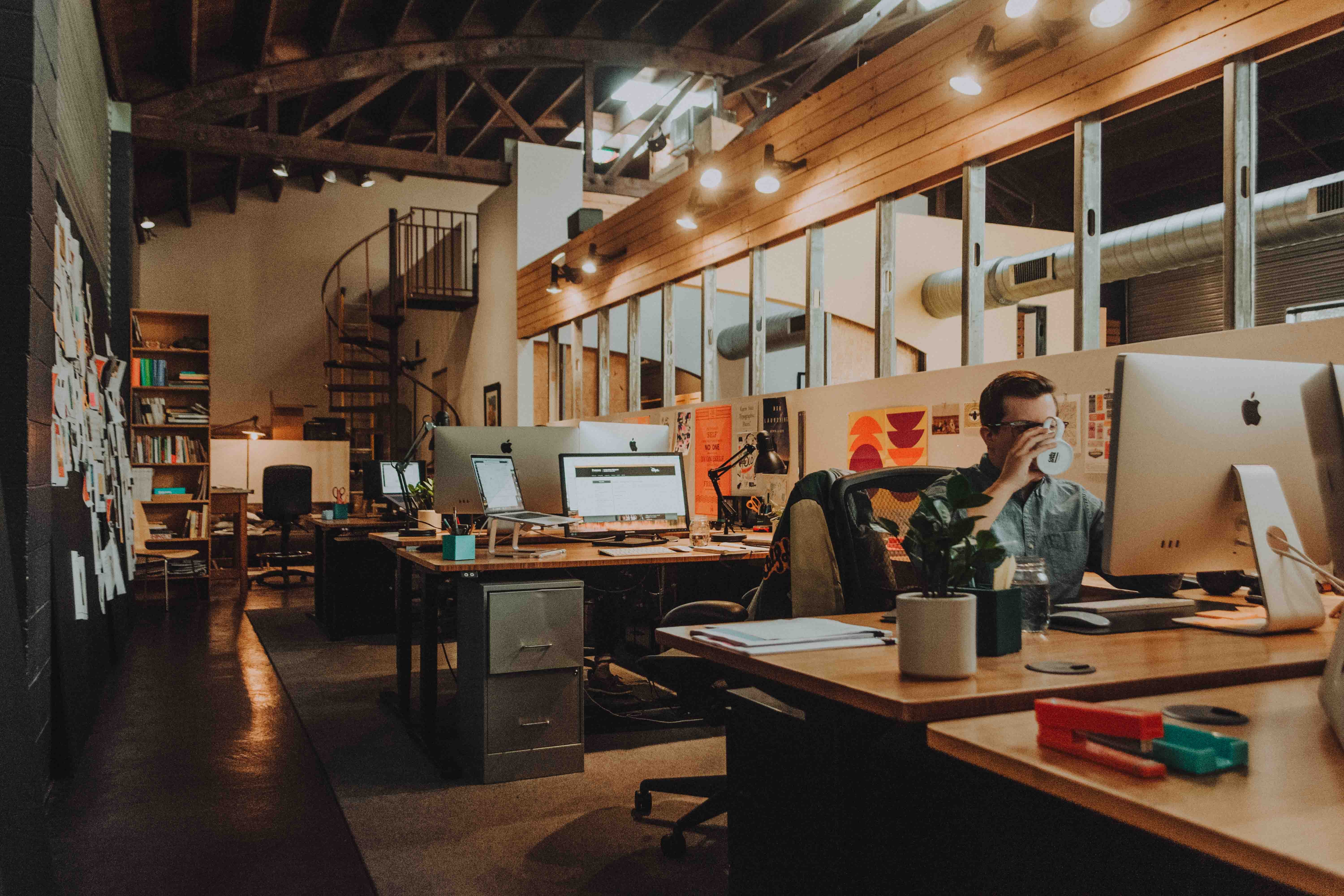
SimpsonScarborough offices in Columbus, OH
We can say what we want our work environment to look like in the next year. We can say what we want our policies to look like in the next year. And it feels like everyone has a seat at the table. It's also a little scary at times—it's like that blank slate principle. But we're also able to ask ourselves if there's a better way: what's our process for approving creative? What's our process for delivering creative? What does it look like when we interact with clients? And sometimes, when you have those things defined, it makes your job easier, but it becomes less flexible. As we continue to hire and grow, that will inevitably change, we won't be able to pivot as much—or at least as quickly.
MK: OK, tell us a little bit more about your work. What are some of your favorite projects or maybe the most rewarding projects you've worked on?
CL: I would say my favorite project to date was probably MCLA. We were able to take this client that had something incredible to offer and a really compelling narrative, but not a lot of presence, not a lot of awareness. Our partnership with them was incredible, but the most rewarding thing has been to see how much they've owned their brand since we've handed it off. To be able to create work for them is one thing, but to able to see them actually take it, and run with it, and own it, and feel it—that's a testament to it feeling so authentic to them.
To be able to create work for them is one thing, but to see them actually take it, and run with it, and own it, and feel it—that's a testament to it feeling so authentic to them.
Then I think with several clients we've had that conversation at delivery that does something to them. And there are still several steps between that conversation and the final delivery of files, and they're just like, "wait, can we start working with this now?" And we have to tell them no, but we love that they want to!
I also think from a non-client perspective, being able to see the people that I've hired or the team members that I brought on start to really excel and find their spot. Like watching (Senior Designer) Katie continue to develop SimpsonScarborough's own brand has been one of the most rewarding experiences I've had.
.jpg?width=6000&name=SS-Print%20(80%20of%2081).jpg)
MK: What do you wish everyone understood about design? Or maybe a better question is: what should everyone know about design?
CL: I want them to understand that it's more than window dressing. It's so much more than a pretty face. It can—it should—align strategy seamlessly between messaging, visuals, even digital. I think that's why I'm so passionate about never allowing any team members to be siloed. I don't want them to think: oh, I'm just a designer or oh, I'm just a writer. I want people to think of themselves as marketers who have a specific skill set they bring to the table, but that doesn't mean they can only weigh in on their area of expertise.
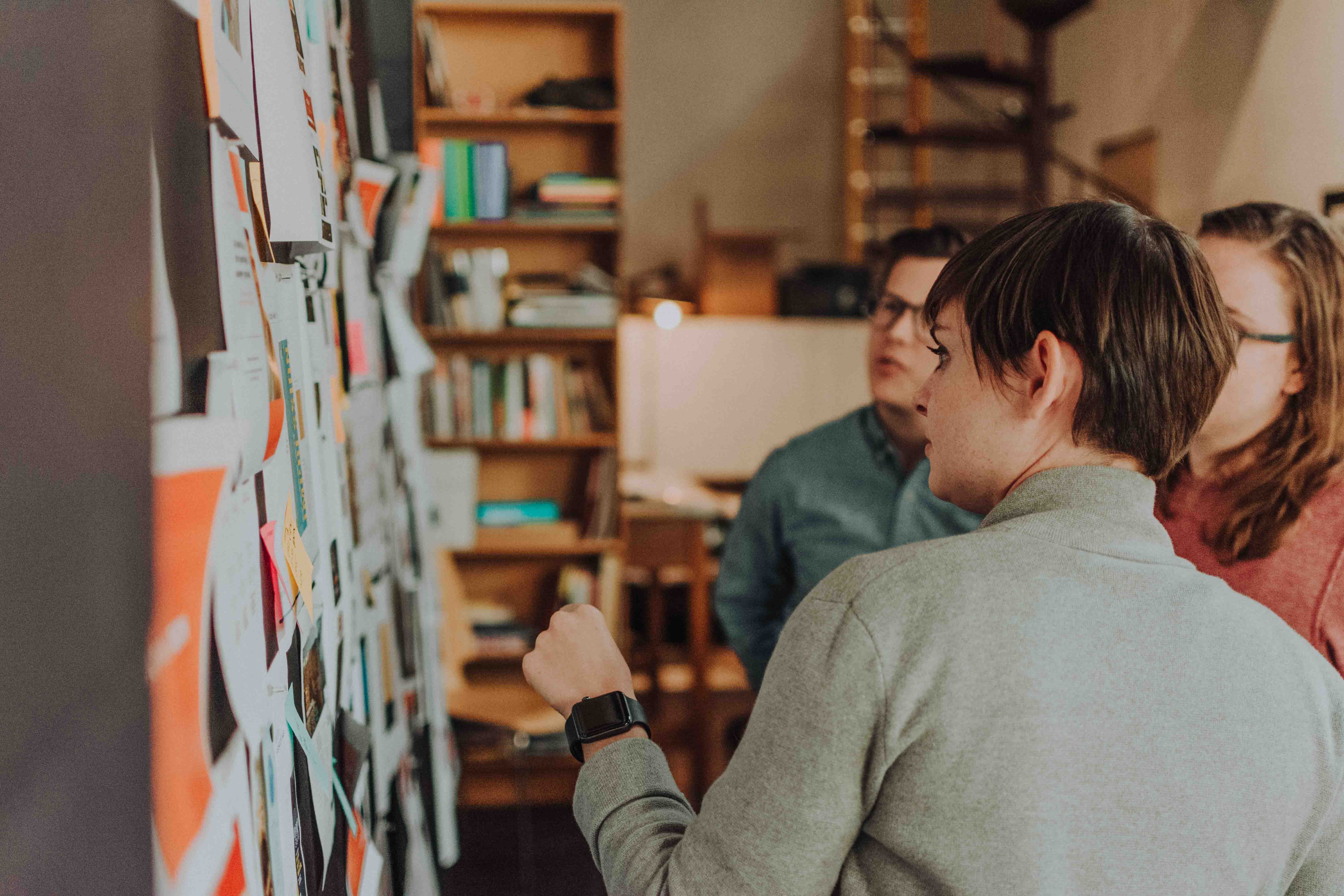
I also think that design has such an ability to be strategic. But from a window dressing perspective—even if you have a kick-ass strategy, rock-solid headlines and messaging, but it doesn't look professional, and it doesn't look trustworthy, you're dead on arrival. And that's so much more than just the face value design—it's how it's produced. It's the thoughtfulness of how it's made and what the result is—whether that's digital, video, or print. If we're not thoughtful about that, then we don't do justice to all of the research and strategy leading up to that point.
I want people to understand that design is more than window dressing.
MK: What about higher ed more broadly? Schools are closing. Everyone's panicking about the impending demographic cliff. You've been a part of a lot of campus communities—both personally and professionally. What's your take on the realities of the industry including the fact that people are losing faith in higher ed altogether?
CL: I was recently in a client brainstorming meeting where we were discussing this really aspirational, fantastic narrative, and I had to speak up and say that we still need to make sure this hits the nail on the head that students are gonna get a return on investment—that they're not going to be buried in debt. And I hate being the killjoy, but we can have the best narrative and the best messaging and gorgeous visuals, but we can't lose that message of pragmatism. And someone in the room spoke up and said, "Okay, so just take this and make it a little more selfish." And I really don't think that's fair: it's not selfish. Students shouldn't be viewed as selfish because they're wary of taking on massive debt loads just to get a degree.
I mean, I think there's something incredibly noble about higher ed—there's this greater cause that I can really get behind, which is why I'm in this industry. But that doesn't mean that students are selfish or self-involved to be concerned about whether they're going to get really practical skill sets they can take to the workforce. And I think we've only begun to see that change: I think trade schools are going to see a big uptick in the coming years—they already have in a lot of cases. But schools need to be better about articulating that a liberal arts experience doesn't have to be antithetical to getting really practical skills.
MK: Ok, let's switch gears here for a minute. If you weren't a creative director, you would be:
CL: A baker beekeeper.
MK: I'm not even going to ask a follow-up. I'm just going to let that hang there.
CL: Yeah, just write hipster.
MK: Tell me one insanely ridiculous goal you have for your life.
CL: I want to have goats. I really like goats. Something about their demeanor I find very compelling.
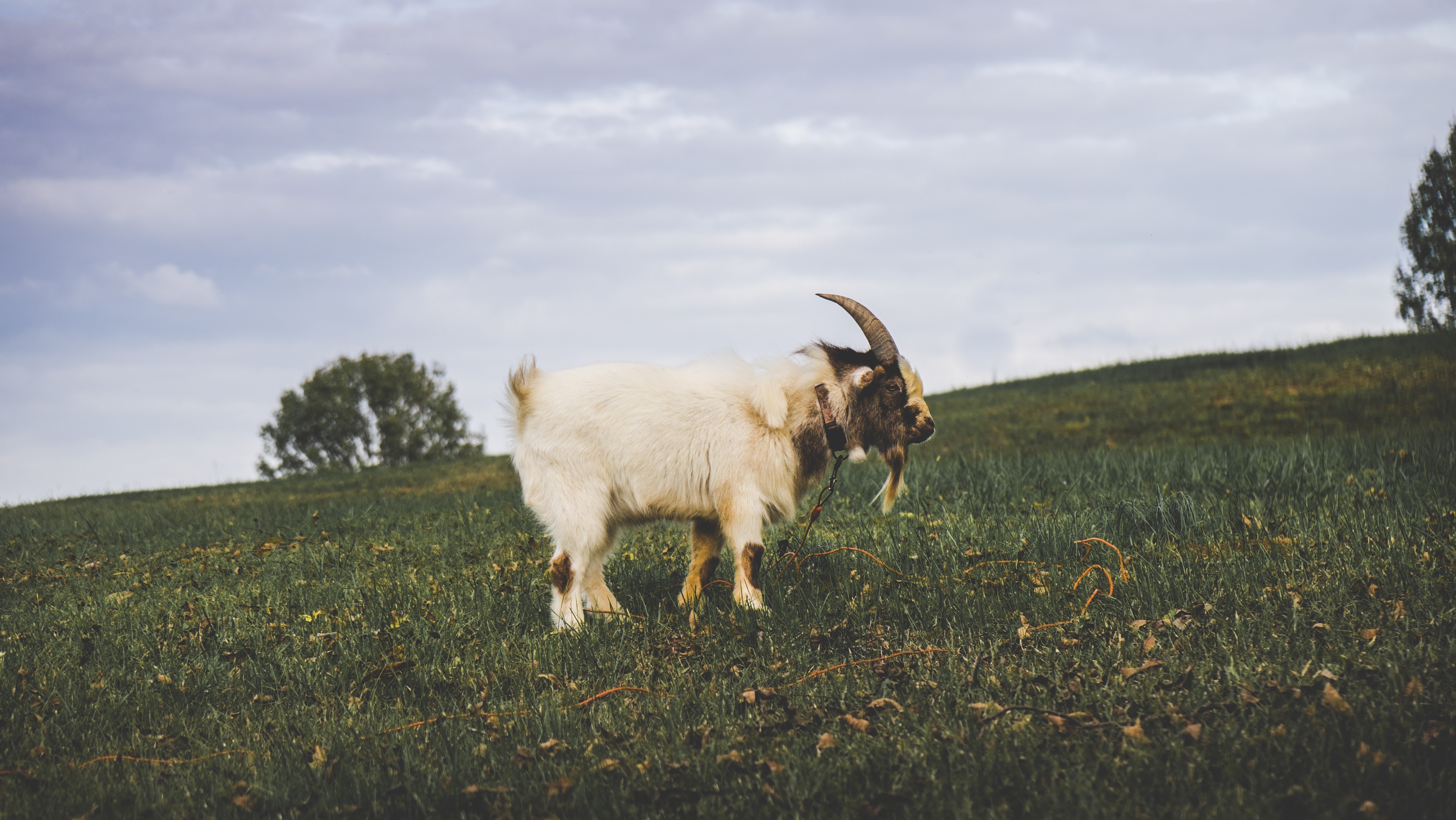
A picture of a goat with a compelling demeanor. Photo by Andrew Welch
MK: OK, so you are a hipster. What about dinner with three famous people - living or dead. You can use famous fairly liberally.
CL: Artemisia Gentileschi, Isabella Rossellini, and Stanley Tucci. Stanley Tucci is my celebrity crush. He's like a 60-year-old man with no hair and always wears a leather jacket. Steven and Jack (SimpsonScarborough strategists) always give me a hard time about that.
MK: What's the biggest change from Associate Creative Director to Creative Director?
CL: One of the big differences is that I'm now overseeing the copywriters as well as the designers, which I love. I think that this is going to be a good move for us to make sure that everything we do is thoughtful and consistent, so it's not so siloed. So I can say, OK, I'm watching what this designer's putting together relative to where this writer is taking the messaging to ensure consistency and strategic alignment.
I would also say there's more clarity around roles from when we acquired Knowble. Combining our team with theirs was honestly so much fun. Just learning from one another and discovering complementary skillsets, but we also knew we would have to rethink our org structure a bit.
The other big thing that I've noticed is that while I was in a ACD, I spent probably 60-70% of my time heads down, designing or working, and then the remainder delegating tasks or communicating with clients -- things like that. But now it's flipped: a majority of my time is spent delegating, communicating, presenting with clients, or mentoring the people around me. I probably only spend 15% of my time actually heads down designing.
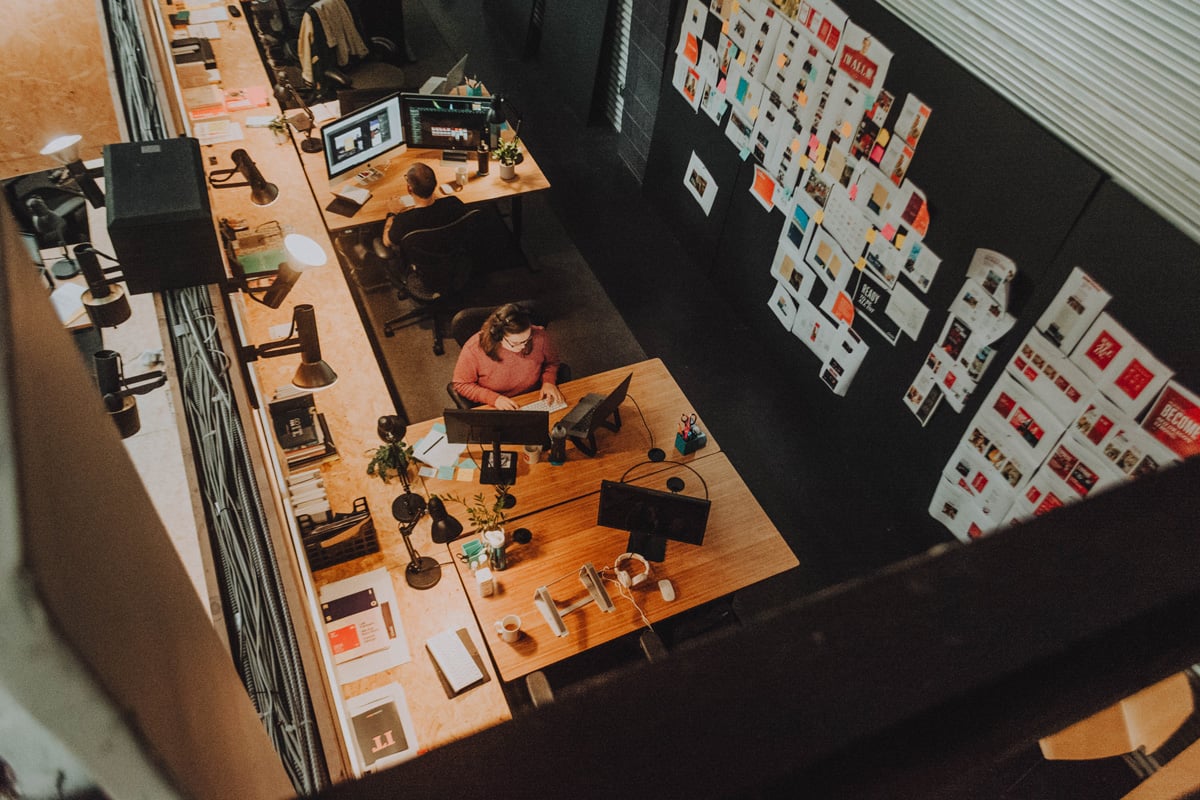
MK: Is that sort of bittersweet?
CL: Yeah, I think what makes it worth it is just being able to be a resource for the people that I've hired and seeing them make really great work and then feeling like I'm a part of that. But I do miss those times when I can just put on my headphones and just sort of tune out and just completely crank out some design, which I'm still gonna be able to do—just not as often.
MK: You've talked a lot about mentoring people and developing them and how much pride you take just in seeing their work, which I think is all so important in a leadership role. But can you talk about creating a space—physically, culturally, and otherwise—that is conducive to creativity and just high-quality work? Because I think people have a lot of misconceptions about the creative process.
CL: I think the best creative work comes from when a writer or designer takes full ownership of the concept. When they feel personally involved in the concept and really care about the client. When they feel as though they're invested in the story—because they are. And I think when you own a concept, you feel much more at liberty to take risks. I think that's a really important part of creating good work: doing something that scares you a little bit every time. Whereas if you're taking someone else's work and running with it, you feel a little bit more like your hands are tied. So when you really take ownership of something, I think that's important.
I do miss those times when I can just put on my headphones and just crank out some design.
Another key is this balance of giving my team everything they need, but then also letting them do their thing. Be active in providing them with all the resources they need, but passive in letting them run with it. And then being there for them as a resource when they need some insight or feedback.

The other part of the balancing act is remembering that we're here solely for our clients. We're here to elevate our clients and give them great work that accomplishes the goals that they set out to accomplish. And of course, sometimes that's going to mean that we're gonna push them a little bit. Sometimes we have to tell them that what they're asking for and what they want are two different things. That in order to accomplish their goal, they're going to have to get out of their comfort zone. But it's a balance because, at the end of the day, if the client is not happy, we haven't done our jobs well.
The research is what gives us our freedom to really push boundaries.
MK: Last question: what should people expect from the creative side of SimpsonScarborough in the coming year?
CL: I think people can expect thoughtful work that feels like a seamless transition from the research and strategy. Creative that feels like a natural extension—like that there was no hard line of when it was handed off. I think they're going to be able to see work that pushes the boundaries a bit because we do have data to back it up. That gives us the flexibility to do things that are out of the box.
MK: That is such a great point.
CL: Yeah, I think some people hear the word research and it sounds limiting, but I actually think it does the opposite for creative. The research is what gives us our freedom to really push boundaries.
Follow Cole on instagram @handsomelettering


